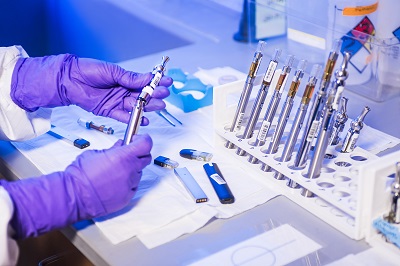Process, required documents, and considerations for applying for NMPA registration of Class III medical devices in China
Release time:2024-08-01 14:01:49
The author:
source:
Applying for NMPA (National Medical Products Administration) registration of Class III medical devices in China involves a detailed process, specific required documents, and various considerations to ensure compliance.
Applying for NMPA (National Medical Products Administration) registration of Class III medical devices in China involves a detailed process, specific required documents, and various considerations to ensure compliance. Here’s a comprehensive guide:
Process:
Classification and Preparation:
- Classification Verification: Confirm that your device is correctly classified as Class III according to Chinese regulations.
- Regulatory Pathway: Determine the specific regulatory pathway applicable to your device.
Documentation Preparation:
- Technical Documentation: Prepare comprehensive technical documentation, including:
- Device description, specifications, and intended use.
- Design drawings, diagrams, and manufacturing processes.
- Risk analysis and mitigation strategies.
- Instructions for use and labeling information.
- Verification and validation data.
- Quality Management System: Obtain ISO 13485 certification or equivalent, demonstrating compliance with quality management standards.
- Technical Documentation: Prepare comprehensive technical documentation, including:
Clinical Data (if applicable):
- Provide clinical evaluation data to demonstrate device safety and efficacy.
- Include clinical trial reports or clinical data from relevant studies.
Local Testing (if required):
- Conduct testing in China, if necessary, to comply with Chinese standards and regulations.
- Ensure testing is performed at accredited Chinese laboratories.
Appointment of Local Agent:
- Designate a local agent or representative in China who is registered with the NMPA.
- The local agent will handle communication with the NMPA and regulatory affairs on your behalf.
Application Submission:
- Document Preparation: Ensure all documents are complete, accurate, and translated into Chinese.
- Online Submission: Submit your application and supporting documents through the NMPA’s designated online portal.
- Physical Submission (if required): In some cases, physical copies may need to be submitted to the NMPA office.
Review and Evaluation:
- The NMPA will review your application and documentation to verify compliance with Chinese regulations.
- This process may involve several rounds of review and requests for additional information or clarification.
On-site Inspection (if applicable):
- The NMPA may conduct an on-site inspection of your manufacturing facilities to ensure compliance with quality standards and regulatory requirements.
Approval and Registration:
- Upon successful review and completion of any necessary inspections, the NMPA will issue a registration certificate.
- This certificate allows you to legally market and sell your Class III medical device in China.
Post-Market Surveillance:
- Comply with post-market surveillance requirements, including monitoring device performance, reporting adverse events, and maintaining ongoing compliance with regulatory standards.
Required Documents:
- Device technical documentation, including design specifications and manufacturing processes.
- Quality management system certification (e.g., ISO 13485).
- Clinical evaluation data or clinical trial reports (if applicable).
- Testing reports from accredited laboratories (if required).
- Labeling and instructions for use in Chinese.
- Authorization letter appointing the local agent.
- Manufacturer’s authorization letter (if applicable).
- Any other documents specified by the NMPA based on device classification and regulatory requirements.
Considerations:
- Regulatory Consultant: Engaging a regulatory consultant with expertise in NMPA regulations can streamline the process and ensure compliance.
- Timeline: The application process can vary significantly based on the complexity of the device and regulatory requirements. Plan for sufficient time for preparation, submission, review, and potential inspections.
- Translation and Notarization: Ensure all documents are accurately translated into Chinese and notarized where required.
- Local Representation: The local agent plays a crucial role in navigating local regulations and facilitating communication with the NMPA.
- Costs: Budget for application fees, consultancy fees, testing costs, translation fees, and any other expenses related to the registration process.

Contact Us:
Whatsapp or Wechat:+86 15816864648;email address:hito.lin@grzan.cn
.png)
.jpg)
.png)

.png)